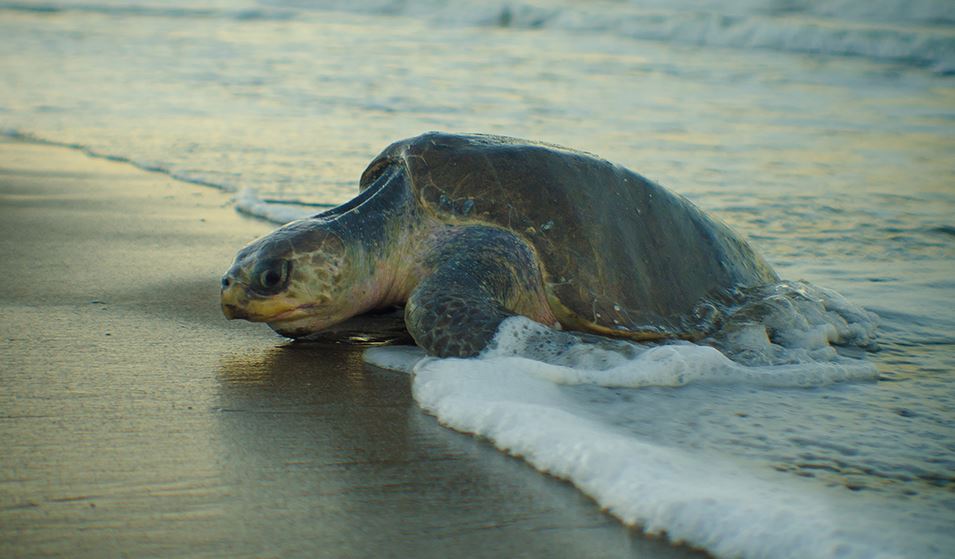Note4Students
From UPSC perspective, the following things are important :
Prelims level: Olive Ridley Turtles
Mains level: NA

Every year, the Indian Coast Guard’s “Operation Olivia”, initiated in the early 1980s, helps protect Olive Ridley turtles as they congregate along the Odisha coast for breeding and nesting from November to December.
Answer this question from CSP 2012 in the comment box:
Q.Which one of the following is the national aquatic animal of India?
(a) Saltwater crocodile
(b) Olive ridley turtle
(c) Gangetic dolphin
(d) Gharial
Olive Ridley Turtles
- The Olive Ridley (Lepidochelys olivacea) is listed as vulnerable under the International Union for Conservation of Nature’s Red list.
- All five species of sea turtles found in India are included in Schedule I of the Indian Wildlife Protection Act, 1972, and in the Appendix I of the CITES, which prohibits trade in turtle products by signatory countries.
- Odisha has also formulated laws for protecting Olive Ridley turtles, and the Orissa Marine Fisheries Act empowers the Coast Guard as one of its enforcement agencies.
- Studies have found three main factors that damage Olive Ridley turtles and their eggs — heavy predation of eggs by dogs and wild animals, indiscriminate fishing with trawlers and gill nets, and beach soil erosion.
- Dense fishing activity along the coasts of Andhra Pradesh, Odisha and West Bengal, especially ocean-going trawlers, mechanized fishing boats, and gill-netters pose a severe threat to turtles.
Their habitats
- The Olive Ridley has one of the most extraordinary nesting habits in the natural world, including mass nesting called arribadas.
- The 480-km-long Odisha coast has three arribada beaches at Gahirmatha, the mouth of the Devi river, and in Rushikulya, where about 1 lakh nests are found annually.
- They generally return to their natal beach, or where they were born, to lay eggs as adults.
- Mating occurs in the offshore waters of the breeding grounds and females then come ashore to nest, usually several times during a season.
- They crawl ashore, dig a flask-shaped nest about 1.5 to 2 foot deep, and lay 100 to 150 eggs in each clutch.
- Hatchlings emerge from their nests together in about seven to 10 weeks.
Get an IAS/IPS ranker as your 1: 1 personal mentor for UPSC 2024

c